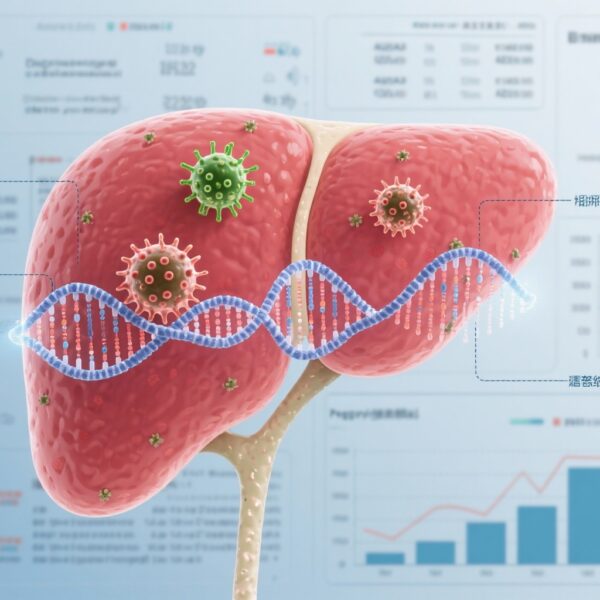Highlight
Patients with chest pain and unobstructed coronary arteries (INOCA) often lack a clear diagnosis and tailored therapy. In a prospective multicenter randomized trial (N = 250), adenosine stress cardiovascular magnetic resonance (CMR) with quantitative myocardial blood flow mapping (endotyping-informed strategy) revised the angiogram-based diagnosis in 53% of participants and produced a large, sustained improvement in angina (adjusted mean difference in Seattle Angina Questionnaire summary score at 12 months 20.9, 95% CI 15.8–26.0). Health-related quality of life (EQ-5D-5L) also improved (adjusted mean difference 0.09, 95% CI 0.04–0.13).
Background: the clinical problem and unmet need
Chest pain is one of the commonest reasons for referral to invasive coronary angiography. A substantial proportion of these patients — women disproportionately represented — have no obstructive coronary artery disease on angiography. This group, variably described as ischemia with non-obstructive coronary arteries (INOCA), is heterogeneous and may include coronary microvascular dysfunction (CMD), vasospastic angina, or non-cardiac chest pain. Despite a recognized symptom burden and impaired quality of life, many patients leave the catheterization laboratory without targeted testing or tailored therapy because routine angiography does not characterize coronary vasomotor function or myocardial perfusion.
The inability to identify an actionable cause contributes to persistent angina, repeated health-care contacts, and a high societal burden. Functional testing that can identify microvascular ischemia and discrete endotypes could enable stratified management, but randomized evidence supporting the clinical utility of noninvasive, quantitative imaging-based endotyping has been limited until now.
Study design
This was a prospective, multicenter, parallel-group, 1:1 randomized superiority trial evaluating adenosine stress CMR-guided management versus usual care in 250 patients referred for invasive coronary angiography for investigation of chest pain who were found to have unobstructed coronary arteries. Key features:
– Population: 250 adults (mean age 63.3 years; 50.4% female) with chest pain and coronary angiography showing no obstructive lesions.
– Intervention: Adenosine stress CMR with quantitative myocardial blood flow (MBF) mapping to detect CMD and to endotype patients by predominant mechanism (for example, global or regional reduction in MBF consistent with CMD). Endotyping informed targeted medical therapy.
– Comparator: Usual clinical care without routine stress CMR endotyping.
– Diagnostic objective: Proportion of participants whose diagnosis was revised after CMR relative to the angiogram-based diagnosis.
– Primary outcome (randomized trial): Seattle Angina Questionnaire (SAQ) summary score at 12 months post-randomization.
– Key secondary outcome: Health-related quality of life measured by EQ-5D-5L at 12 months.
The trial is registered at ClinicalTrials.gov (NCT04805814) and is reported in Bradley et al., Nat Med. 2025; doi:10.1038/s41591-025-04044-4 (PMID: 41214345).
Key findings
Diagnostic reclassification
– The CMR-based diagnostic study component revised the angiogram-based diagnosis in 131 of 247 evaluated participants (53.0%; 95% CI 46.6–59.3%; P < 0.001). This shows that stress CMR frequently provides incremental diagnostic information beyond coronary anatomy alone.
Primary clinical outcome: angina
– At 12 months, the mean SAQ summary score in the intervention group was 70.9 ± 23.6 (mean change from baseline +21.7 ± 22.6), compared with 52.1 ± 24.1 (mean change from baseline −0.8 ± 20.4) in the control group.
– The adjusted mean difference in SAQ summary score at 12 months was 20.9 (95% CI 15.8–26.0), favoring the CMR-guided, endotyping-informed approach. A between-group difference of this magnitude is both statistically significant and clinically meaningful: prior work suggests that a 10-point change in SAQ is a moderate clinically important difference.
Secondary outcome: health-related quality of life
– The EQ-5D-5L index score at 12 months also favored the intervention arm (adjusted mean difference 0.09; 95% CI 0.04–0.13). This change approximates a meaningful improvement in generic health utility.
Other outcomes and safety
– The published summary emphasizes substantial symptom and quality-of-life benefits. The brief report does not provide granular adverse-event data in the supplied text; readers should consult the full manuscript for safety endpoints, health-resource use, and any differences in downstream testing or procedures.
Interpretation of effect sizes
The 20.9-point adjusted improvement in SAQ is large. For context, many medical therapies for stable angina produce single-digit to low-teens improvements in SAQ. The size of benefit here reflects combined effects of accurate diagnosis (reducing uncertainty), targeted therapy aligned to endotype (for example, vasodilators or device/monitoring where indicated), and possibly non-pharmacological management guided by clearer mechanistic explanation.
What CMR-based endotyping adds — mechanism and plausibility
Stress CMR with quantitative myocardial perfusion mapping measures absolute myocardial blood flow at rest and during hyperemia, permitting calculation of myocardial perfusion reserve (MPR). Reduced hyperemic MBF or reduced MPR indicates impaired microvascular vasodilator capacity (CMD). Focal perfusion defects with normal coronaries can suggest vasospasm or microvascular regional dysfunction, while global reductions are typical of diffuse microvascular disease.
Assigning an endotype (for example, predominantly microvascular ischemia versus vasospastic tendency versus non-cardiac pain) allows clinicians to prescribe mechanism-directed therapies: calcium-channel blockers and nitrates for vasospasm; antianginal agents with proven benefit in microvascular angina (for example, beta-blockers, ACE inhibitors, statins, and consideration of recent agents studied in microvascular disease) and optimized risk-factor control. Providing patients a plausible pathophysiological explanation for their symptoms is itself likely to improve adherence and perceived symptom control.
Comparison with prior evidence
Invasive coronary function testing and stratified therapy have previously been shown to improve outcomes in single-center randomized trials (for example, the CorMicA trial), which used invasive tests to define vasomotor dysfunction and guide therapy. The current trial extends that concept to a noninvasive imaging modality (CMR) that is widely adopted in many centers and avoids the need for additional invasive coronary physiological testing. Importantly, the magnitude of symptomatic benefit in this randomized CMR-guided strategy is consistent with — and in some respects larger than — prior mechanistic trials, supporting the clinical relevance of noninvasive endotyping.
Strengths and limitations
Strengths
– Prospective, randomized, multicenter design enhances generalizability.
– Use of quantitative CMR perfusion mapping provides objective, reproducible endotyping that can be standardized across sites.
– Patient-centered primary outcome (SAQ) with a long (12-month) follow-up demonstrates sustained benefits.
Limitations
– The published summary does not present full safety or health-economics data; these are necessary to understand trade-offs between diagnostic cost, downstream testing, and resource use.
– Blinding is likely impossible for patients and treating clinicians in a diagnostic strategy trial, raising potential for expectancy or performance bias that could augment patient-reported outcomes. However, the magnitude of improvement and objective nature of the diagnostic reclassification mitigate but do not eliminate this concern.
– Study population consisted of patients who underwent angiography and were found to have unobstructed coronary arteries; results may not generalize to patients with lower pretest probability of coronary disease who are triaged differently.
– Availability of high-quality quantitative stress CMR and expertise remains limited in some regions; operational and training challenges will affect implementation.
Clinical implications and action points
– For patients with persistent chest pain and nonobstructive coronary arteries on angiography, consider referral for stress CMR with quantitative perfusion mapping when available. The test can clarify the mechanism of ischemia, reclassify diagnosis in roughly half of patients, and enable targeted therapy that substantially improves symptoms and quality of life.
– Endotype-informed therapy should follow evidence-based recommendations: use calcium-channel blockers and nitrates for suspected vasospasm; optimize antianginal therapy, risk-factor modification (statins, blood pressure control, ACE inhibitors/ARBs where indicated), and lifestyle measures for CMD. Multidisciplinary care including cardiovascular physiologists, imaging specialists, and specialist nurses can support therapy optimization and follow-up.
– Health services should evaluate local capacity for quantitative stress CMR, training requirements, and cost-effectiveness analyses. Randomized trial evidence of symptomatic benefit is compelling, but policy decisions will depend on resource constraints and comparative value against alternative diagnostic pathways (for example, invasive coronary function testing).
Research gaps and future directions
– Replication in larger, diverse populations and health systems is needed to confirm generalizability.
– Detailed safety, downstream testing, and health-economic analyses are essential to inform guideline adoption and reimbursement policies.
– Comparative effectiveness studies between noninvasive CMR-based endotyping and invasive coronary function testing would clarify the optimal diagnostic pathway.
– Biomarker discovery and integration with imaging (for example, blood-based markers of endothelial dysfunction) could further refine endotyping and personalize therapy.
Conclusion
The randomized trial of adenosine stress CMR-guided, endotyping-informed therapy in patients with chest pain and unobstructed coronary arteries demonstrates clinically important benefits: CMR revised the working diagnosis in more than half of participants and produced a large, sustained improvement in angina-related health status and overall quality of life at 12 months. These findings support the adoption of quantitative stress CMR as a noninvasive strategy to mechanistically phenotype INOCA and inform targeted treatment, while highlighting the need for broader implementation studies, safety and economic evaluation, and health-system planning to widen access to high-quality CMR perfusion mapping.
Funding and trial registration
ClinicalTrials.gov identifier: NCT04805814. Funding sources are reported in the original publication (Bradley et al., Nat Med. 2025); readers should consult the full article for detailed funding statements and potential conflicts of interest.
References
1. Bradley CP, McKinley G, Orchard V, et al. Endotyping-informed therapy for patients with chest pain and no obstructive coronary artery disease: a randomized trial. Nat Med. 2025 Nov 10. doi: 10.1038/s41591-025-04044-4. Epub ahead of print. PMID: 41214345.
2. 2020 ESC Guidelines for the diagnosis and management of chronic coronary syndromes. Eur Heart J. 2020;41(3):407–477.
3. Ford TJ, et al. Stratified medical therapy using invasive coronary function testing for angina: the CorMicA trial. Lancet. 2018. (See full reference for trial details.)
4. Spertus JA, Winder JA, Dewhurst TA, et al. Development and evaluation of the Seattle Angina Questionnaire: a new functional status measure for coronary artery disease. J Am Coll Cardiol. 1995;25(2):333–341.
(Readers should consult the original Nat Med article for additional protocol details, safety data, and prespecified secondary analyses.)



